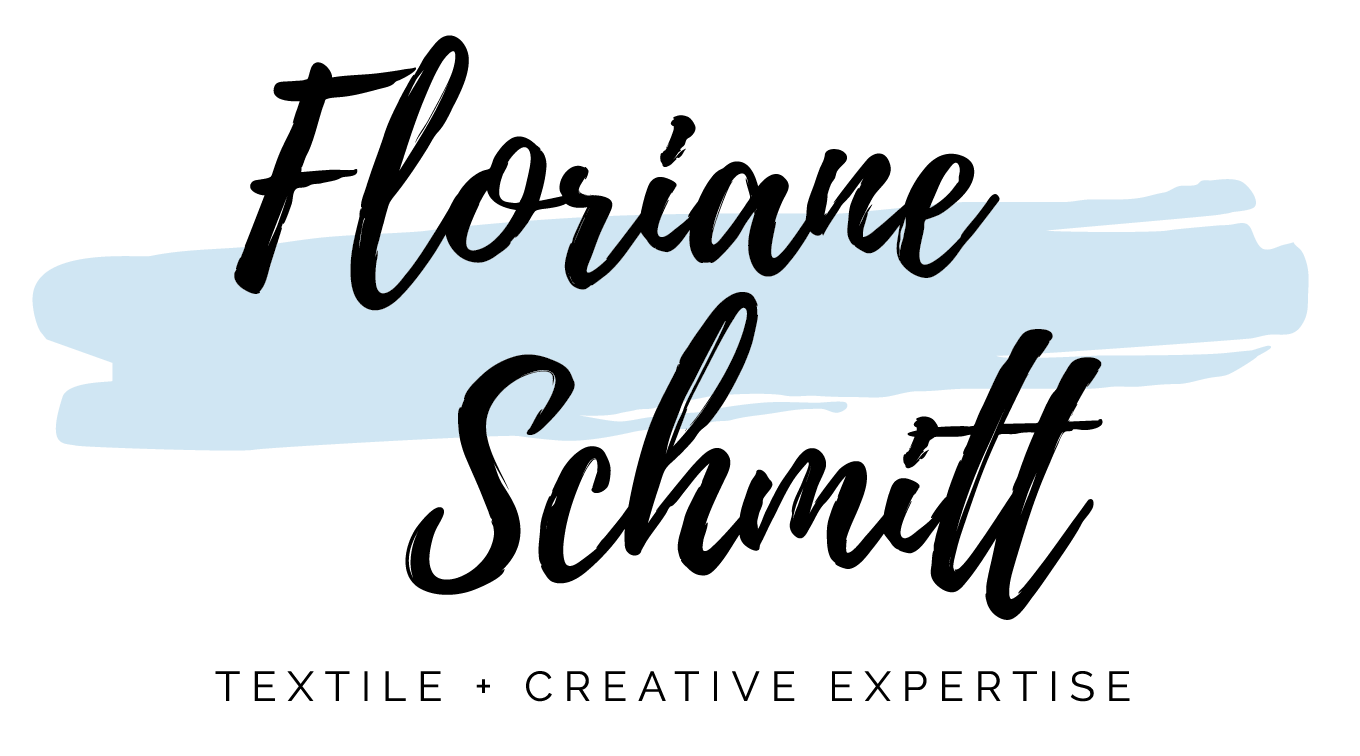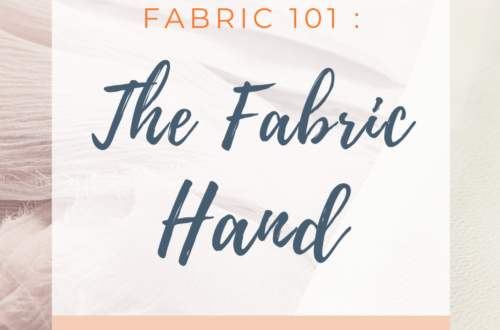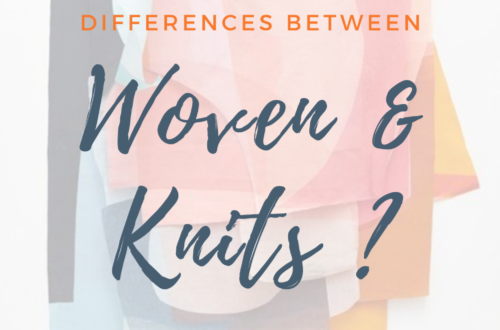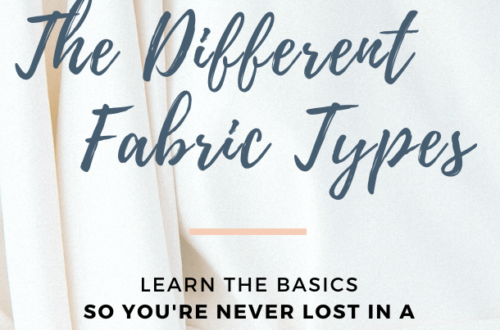
Textile Fibers
Today I’m introducing you to another wide subject inside the “Textile Knowledge” category : The Fibers used to make textiles. Fabrics are mostly made from threads, and threads are made from fibers. So fibers are at the heart of every fabrics, and they give the fabrics a lot of their properties.
What are textile fibers exactly ?
The term “Fibers” refers to the nature of the material, and also to the smallest unit of the material used to make textiles.
So fibers are the smallest components of fabrics : if you look a fabric through a microscope, the fiber is what you’ll see : a silk fiber, a polyester fiber, or a cotton fiber, for example.

there are 3 ways to class fabric ; and one of them is by fibers !
Download it now, before you get confused with all the crazy technical words out there !
[Last page is the recap of the article you’re about to read]
There are 3 main categories of fibers, that can be found in nature, or be created by men : Natural fibers, Artificial fibers, or Synthetic fibers. Natural fibers are of course those found in nature (through plants or animals). Artificials & Synthetics are both man made, but the difference is that synthetic are 100% made in factories by humans, and artificials have a natural base that we transformed by adding chemicals.
When talking about man-made fibers, we can also use the word “filament”, because when we make synthetic or artificial fibers, the fibers are longer than the natural fibers. Actually, when inventing our new man-made fibers, we got inspired by the long, thin and uninterrupted filament produced by silkworms.
Why do you need to know about them ?
Once we have the fiber, or filament, we can make threads and then fabrics ! So again, fibers are the beginning of any textile, and knowing them helps you understand fabrics better.
Fibers makes the composition of the fabric, so if you’re looking for specific properties, it’s by knowing the properties of each fibers that you’ll know if the fabric is suited for your creations and usage or not !
[Bonus : you’ll choose your own clothes better if you know what type of fibers they are made of ; no more overpaying for a polyester outfit 😂]
Let’s dive into each category to learn more about each fibers for textiles !
Natural Fibers
Natural Fibers are all the fibers we were able to extract from nature, whether from plants or animals. The most common natural fiber today is cotton, then wool and silk. Until the 19th century, we only had access to natural fibers ! Mosts natural fibers can be found in the general category called Cottons (+ a little bit in Wools and Silkies)
Related : The Different Types of Fabric
Natural fibers include :
Vegetable fibers : Cotton, Kapok, Flax, Hemp, Jute, Ramie, Raffia, etc
Animal Fibers : Wool, Alpaca, Llama, Vicuna, Camel, Rabbit, Angora (from a race of rabbit, the angora rabbit), Mohair (from a race of goat, the angora goat), Cashmere (from the cashmere goat), Yak, Silk, etc
Properties :
While all natural fibers don’t have exactly the same properties, we can find some similarities between them, especially in contrast to the other 2 types of fibers. Let’s see the general properties of natural fibers :
- High moisture absorption
- Nice handfeel
- High heat conduction
- Easy to dye
- Low mold resistance
- Medium/Low resilience
- Long drying time
- Shrinking
- High Pilling
Fabrics made with natural fibers :
Typical Cotton fabrics : Batiste, Calico, Chintz, Corduroy, Damask, Denim, Drill, Flannelette, Gabardine, Interlock, Oxford, Piqué, Plain Rib, Poplin, Terry, Velvet
Typical Linen fabrics : Crash, Duck (= a canvas fabric but in linen), Half Linen, Holland
Typical Wool fabrics : Felt, Flannel, Fresco, Loden, Saxony, Serge, Shetland, Tartant, Tricotine, Tweed
Typical Silk fabrics : Chiffon, Crêpe, Crêpe de Chine, Doupion, Duchess, Organza, Pongé, Satin, Satin Crêpe, Taffeta, Twill. With wild silk : Tussah, Shantung
Use :
- Fashion : Cotton being the most common fiber used in garment, we can find a lot of clothes made out of cotton, whether in casual fashion, or more elegant shirting. Linen is perfect for summer garments and wool for winter clothes, as well as suits. Silk is naturally elegant and perfect for dresses and blouses
- Luxury Fashion : Silk & different Wools (cashmere, merinos etc) are considered high quality fibers, with great properties, handfeel and look.
- Interiors : Upholstery needs super resistant fabrics, and natural fibers usually are.
Artificial Fibers
Artificial fibers are made by adding chemicals to organic (usually cellulose, extracted from wood) or inorganic material. The first artificial fiber ever created was viscose, in 1885, and quickly became the cheap alternative for silk.
Artificial fibers includes :
Organic fibers (or Natural polymers) : Viscose/Rayon, Cupro, Lyocell, Modal, Acetate, Triacetate, Alginate, Rubber
Inorganic fibers : Ceramic fibers, Metal fibers, Glass fibers, Carbon fibers, Bore fibers
Properties :
- Medium moisture absorption
- Soft handfeel
- Mold resistant
- UV resistant
- Low resilience
- High electrical conductivity
- High Pilling
Fabrics made with artificial fibers :
While natural fabrics got their name mostly thanks to their structure (often the name of the weave), artificial fabrics can either take the name of the natural fabric they are mimicking, or the name of the company that produce the them the most.
So the common trade names are : Lenzing Viscose®, Lenzing Modal®, Tencel® (Lyocell)
Use :
- Fashion : Most artificial fibers are used to replace natural fibers ; for example Viscose replace silk fibers for cheaper garments. Some artificial are considered more sustainable like Lyocell and are privileged by companies lately.
Synthetic Fibers
Synthetics are entirely man-made fibers. A lot of synthetic fibers appeared around 1930, and were appreciated for their easier care (rapid drying, no ironing, etc) and of course for their cheaper price. During the 1950’s, microfibers and elastane appeared, and became trendy in the 1980’s. They allowed to create completely new types of garments. Until this point, man-made fibers were just a cheaper substitute for natural fibers. But with newer fabrics in the 80’s such as Kevlar, synthetics became more technical, and able to do more than natural fibers could. Then we invented “intelligent” fabrics, that can react to the environment, like Gore-Tex. Technicals developed even more since, influenced by the raise of sportswear and athleisure wear.
Synthetic fibers include : Polyester, Polyurethane, Polyamide, PVC/Vinyl Acrylic, Elastane/Spandex, Polypropylene, Polyethylene, Aramids
Properties :
- Light fabrics
- Low moisture absorption
- Mold resistant
- Good Resilience
- Anti abrasion
- Fast drying
- Easy care
- No shrinking
- Recyclable
- UV Resistant
- High electrical conductivity
Fabrics made with synthetic fibers :
Just like artificial fabrics, synthetics can either take the name of the natural fabric they are mimicking, or the name of the company that produce the most of them. Nylon was the first type of polyamid, produced by the brand DuPont in 1935. The name is now used in everyday language.
So the common trade names are : nylon, Kevlar® (Aramids) Coolmax®, Dacron® Thermolite® (Polyester), Tyvek® (Polyethylene), Lycra® (elastane)
Use :
- Fashion : Nylon is used for lingerie, swimwear, waterproof clothing. Polyester is used for any type of garment, whether blended or plain
- Interior : Synthetics are used when needing a resist, cheap, and/or with special properties such as fireproof, waterproof, etc
Okay ! Let’s recap what we learned today !
Fibers are the smallest component of fabrics.
3 types of fibers exist : Natural, Artificial or Synthetic.
Natural fibers have a nicer hand feel, are great to keep you warm but are easier to be broken (low resilience)
Man-made fibers (Artificial + Synthetics) are lighter, thinner, evacuate moist quicker and have easy-care. And while in the beginning they were only mocking natural fibers, they now solve more needs than them, ‘cause we keep inventing new fibers and fabrics with amazing properties !
And that’s it, you know all the basic fibers for textiles !
I hope I made it as clear as possible !
Still a little bit confused about all the fibers ? Get the cheat sheet on the 3 different ways to classify fabrics ! [One of them is by fiber composition]. The cheat sheet include 3 infographics, so it becomes way easier to remember everything !

Pin this for later !


Floriane Schmitt is a textile designer, sharing her knowledge about textiles + creativity. She graduated with honors at a Parisian fashion school in Fashion Design & Fashion Business, and started her career with Flo Home Delight, her creative textile studio. Discover her collections on www.flohomedelight.com. She is also teaching creative souls how to become better designers, using textile as a main medium.





